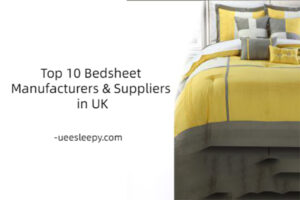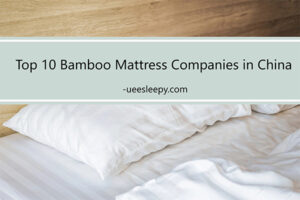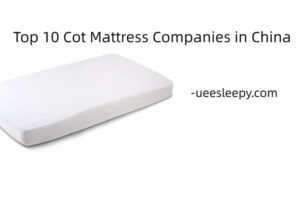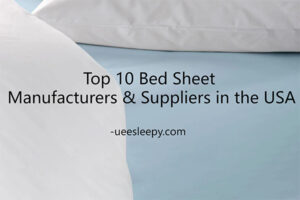If there’s one area in your home that needs extra pampering, it’s the bedroom. Ensuring you get a good night’s sleep is a key factor in living a happy, healthy, and productive life while taking the time to coordinate bedding color schemes and designs will bring a harmonious feel to your room.
So whether you’re furnishing a master bedroom, putting the finishing touches on a kid’s room, or preparing a spare bedroom for guests to enjoy, choosing the right bedding is crucial. But with so many options on the market, how do you know which one is right for you and your unique situation? Browse through our bedding buying guide to find the option that’s right for you.
1. Which size is right for me?
First things first – you need to make sure you choose sheets that actually fit your bed. After all, there’s nothing worse than pulling the sheets as tight as possible to fit your mattress, only to wake up in the middle of the night to find the sheets beneath you crumpled. For simplicity, we stock bedding along these five dimensions:
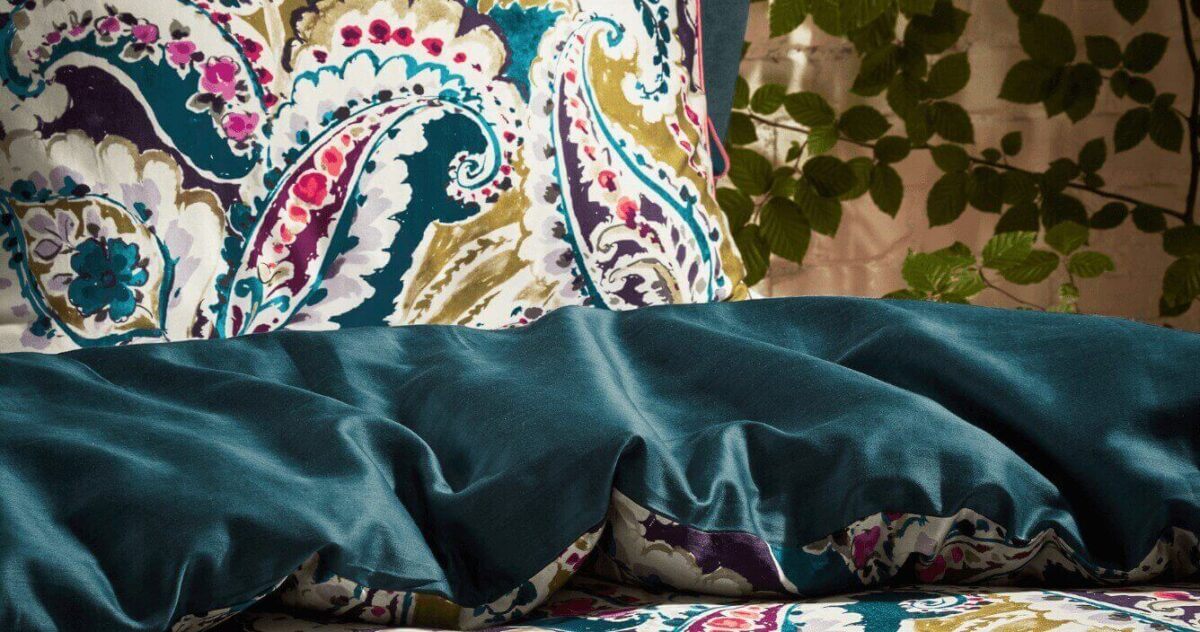
1) Single bed
We know not everyone has room for a double bed in every room, which is why we have a wide selection of twin bedding to choose from. Striking and luxuriously soft to the touch, our range of twin bedding is designed to create a chic yet cozy impression while maximizing the available space in a room.
2) Three-quarter bed
A three-quarter bed that falls between a single and a double is perfect for a single that likes a little more room to move than a standard single. They’re also ideal if you want to make the most of a smaller room and squeeze in space beyond the bed frame. Therefore, our three-quarter sheets are the ideal compromise between comfort and space.
3) Double bed
The nation’s most popular bedroom choice, a double bed works equally well in the master bedroom or guest room. Choose from a range of stylish twin bed linens that are guaranteed to add elegance to any room they are placed in.
4) King-size bed
Ever wanted to live like a king? You can use the king-size bedding collection.
5) Super King Size Bed
Who Said Indulgence Is Bad? For those who have room for a super king-size bed, it enhances their sleep quality and offers unrivaled space to relax. Unfortunately, finding super king-size bedding can often be tricky, but here are plenty of options to suit your needs.
2. Which bedding should I buy?
After determining the bedding size you need, the next step is to determine which sheets you need. If it’s a brand-new bed, you may be in the market for a bedding set. On the other hand, you may wish to upgrade only certain items or mix and match parts from different sets to create your own unique end result. You should consider the following factors no matter what approach you choose:
1) Mattress protector
Although often overlooked, mattress protectors are a solid investment for any homeowner, and even more so for those in the hospitality and travel industries. A quality mattress protector will help your mattress last longer and protect it from accidental spills, water spots, and stains. It also repels allergens.
For example, I have a friend who is a medal supplier. Because of his job, he needs to attend exhibitions all over the country every year. At this time, he needs to stay in a hotel for a few days. However, because he is prone to allergies, in order to avoid allergies affecting his work, he always brings bed sheets from home. He told me that this method is effective.
2) Sheets
The bed sheet is perhaps the most essential component of any linen set. You can choose from a variety of styles, including:
- Sheet – As the name suggests, a sheet is a piece of material that is placed over and tucked under a mattress to create a neat and aesthetically pleasing finish. They can also be used to provide a second layer of insulation between the person in the bed and the duvet.
- Fitted Sheet – Again, the clue is in the title. Unlike a fitted sheet, a fitted sheet is specifically designed to fit the size of the associated mattress, with elasticated edges to hold it in place. This style is easier to fit than a flat sheet but is less versatile.
- Fitted Valance Sheet – A variation on the above theme, the valance sheet has an extra length of fabric that drapes over the corner of the bed and hangs from the floor. This makes it perfect for sheltering any items, equipment, or other knick-knacks you might want to store under your bed.

3) Duvet cover
After you’ve dealt with the bottom layer of your bedding, you need to decide which duvet cover to choose. This is especially important as it is immediately visible to anyone entering the room and will set the tone for the rest of the room’s interior. From classic satin-striped designs to luxurious velvet-trimmed styles and hotel-standard Egyptian cotton sheets, we have options to suit any taste and color scheme.
4) Pillowcase
Pillowcases play a vital role in both comfort and appearance as the place you sleep each night, so it pays to take the time to choose the right option for you. There are many types of pillowcases to choose from, including:
- Housewife – Perhaps the most common type of pillowcase, housewife pillowcases are rectangular with an extra small piece of fabric at the opening to help hold the pillow in place. When purchasing a bedding set, you most likely received a housewife pillowcase.
- Oxford – Also very popular, the Oxford pillowcase differs from the housewife pillowcase in that it has a decorative border that adds extra style to the bedding. This creates the illusion that the pillow itself is larger, making it an ideal companion for a king-size or super king-size bed.
- V-shaped – As the name suggests, V-shaped pillowcases are specially designed for V-shaped pillows. These are not usually used as standard sleep pillows, but to help provide lumbar support for pregnant women or others with muscle pain.
5) Bedspread
Bedspreads are most commonly found in hotels, B&Bs, and other hospitality establishments, but they can be the accent of any bedroom. A comforter designed to be layered over a duvet can help complete the look of your choice and complement your decor while adding an extra layer of warmth on colder days.
3. Which material should I choose?
When it comes to bedding, the next thing to choose is its material. This has a crucial impact on how the sheets feel against the skin, which in turn has a knock-on effect on your comfort and sleep quality. Choose from the following options:
1) Cotton
Durable, breathable, and cool in the heat, it’s easy to see why cotton is the #1 choice for bedding fabric. There is some debate about Egyptian cotton versus regular cotton, with the former generally considered to be of higher quality, softer to the touch, and last longer. Egyptian cotton, on the other hand, is more expensive and may require more specific washing instructions.
2) Sateen
Satin is made using only long-filament fibers, while sateen is made from short-staple spinning. As a result, it’s more affordable than its famous namesake, but it still has the silky smoothness of satin. It’s also more versatile, with one side glossy and the reverse matte, which works well in most situations and cleans without fuss.
3) Percale
Contrary to popular belief, percale is not a fabric per se but simply indicates that the material used to make it (usually a blend of cotton and polyester or just 100% cotton) has a thread count of 180 or higher. The plain weave used to make percale is strong, and thick and gives a crisp feel.
4) Microfiber
Like sateen and percale, microfiber refers not to the material itself, but to the dimensions of the fibers used to make the bedding. Composed of tiny, finely woven fibers, microfiber bedding offers several benefits, including breathability, durability, hypoallergenic and stain-resistant properties. Microfiber also holds colors well, so bright colors won’t fade as quickly as other fabrics, and its quick-dye and no-iron properties will save you a lot of time and effort.
5) Polyester
Polyester is a man-made material composed of a variety of natural ingredients that are treated at extremely high temperatures to create a durable, affordable, and easy-care fabric. However, polyester has both advantages and disadvantages. That said, it’s not breathable, so it’s less than ideal in the summer, and it’s also prone to static buildup.
6) Velvet
Although a fairly new phenomenon, velvet bedding is gaining popularity in the UK and beyond. And it’s not hard to see why. Luxurious and decadent, the velvet is soft to the touch, incredibly glamorous, and provides extra warmth for those cold winter nights. On the downside, it’s usually a bit more expensive than other options, as you’d expect for a fabric of this quality.
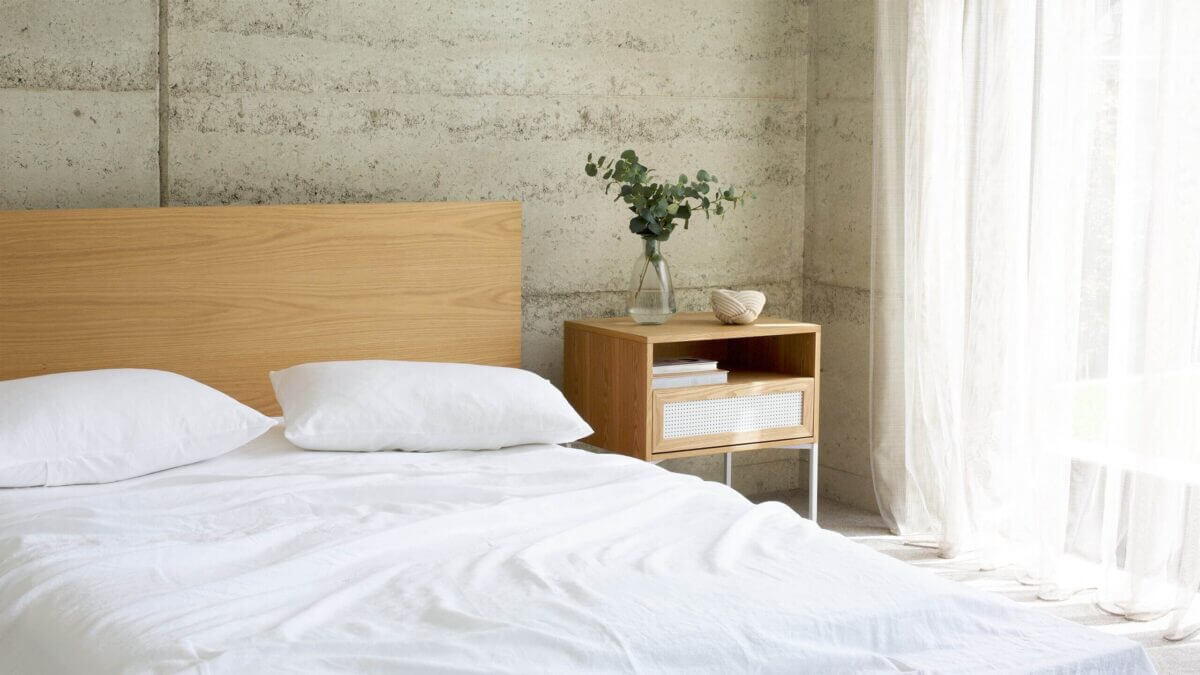
4. Does the number of threads matter?
The term “thread count” refers to the number of threads per square inch of a sheet. The higher the thread count, the tighter the weave – your bedding will feel smoother, softer, and more luxurious. A higher thread count also generally means your sheets will retain their quality longer and even get softer over time. High thread counts are usually between 200 and 800.
For many people, the thread count of their linen is just a number they don’t really understand or take very seriously. In layman’s terms, thread count refers to the total number of threads (vertical and horizontal) found in one square inch of material. Why is this important? Well, generally speaking, the higher the thread count, the finer the weaving of the strands that make it up, and the softer and smoother the final product will feel. That’s why high thread count bedding is ideal for those looking for luxury and elegance.
Having said that, high thread count linens do require extra care when cleaning. This means that there is a trade-off between convenience and quality, which is why choosing the bedding with the highest thread count is not always the best course of action – it depends on your own personal preferences and what the bedding is being put for.
While thread counts do go up to 1,000, most homeowners will find they’re happy with fewer. For example, the standard cotton count is generally 150 counts, and those higher than 180 counts are of good quality. Therefore, it is recommended that you understand the options available and make an informed decision when deciding which thread count is right for you.
5. Which design should I choose?
Now that you’ve gone through all the technical details, it’s time to focus on what really matters – the visual appeal of your bedding! What impression do you want to create with your linens? Warm and inviting? Cool and modern? Minimalist and modern?
No matter what aesthetic you prefer, there are plenty of options to suit all tastes and styles. While plain sheets help create an understated look and don’t take away from your room’s other design features, choosing bedding with embellishments or patterns can be a talking point in itself.
1) Embroidered
Embroidered bedding has a quintessentially English style, featuring fresh and attractive designs that will stand the test of time. From intricate swirls to intricate piping details, the possibilities are endless with embroidered linens.
2) Jacquard
This timeless choice features a breathtakingly beautiful design that exudes elegance and quality craftsmanship. The process of making jacquard patterns is carried out on special looms and requires a lot of skill and patience, so jacquard designs are usually more expensive than other designs.
3) Printed
Using a printed design means that the world is in your hands when it comes to choosing the look of your bedding, as almost any image can be transferred to linens. Be aware, however, that due to the high concentration of dyes used to create the fabric, the fabric may feel a bit rough and of lower quality.
4) Quilted
As the name suggests, quilted bedding takes the form of a patchwork quilt, with each section woven together to create small pockets of air. This is great for keeping the heat in and providing extra comfort in cold weather. The most striking thing about quilted linen is its texture, not its design.
5) Waffle
Much like quilted bedding, waffle linens are made using a very specific weaving technique that makes tactile feel superior to visual appearance. The end product is incredibly soft and cozy – perfect for decadent duvets and long winter nights.
6. Conclusion
Armed with all of this knowledge, you should now have a better idea of what type of wholesale bedding you are looking for and what criteria to use to filter your list of possibilities.
How useful was this post?
Click on a star to rate it!
Average rating 5 / 5. Vote count: 2
No votes so far! Be the first to rate this post.

